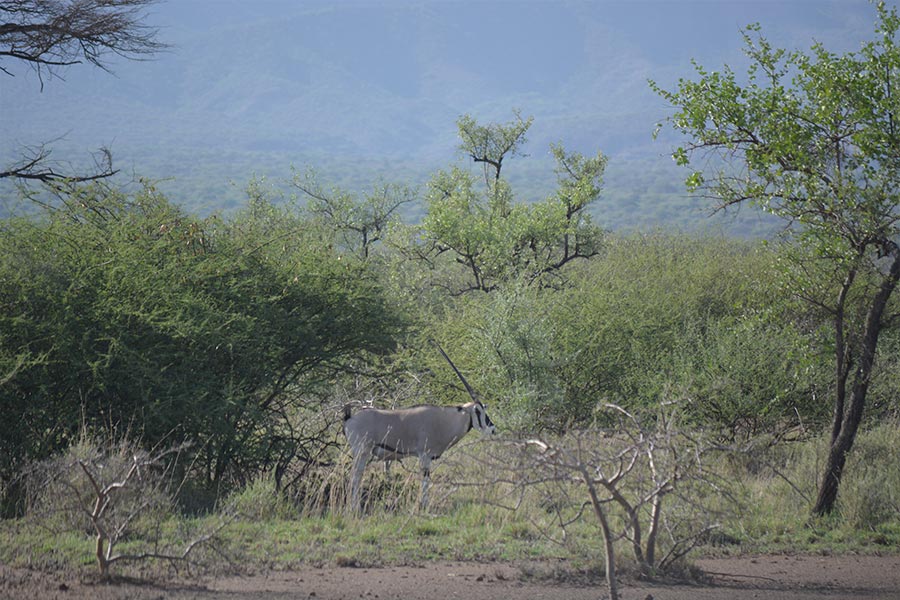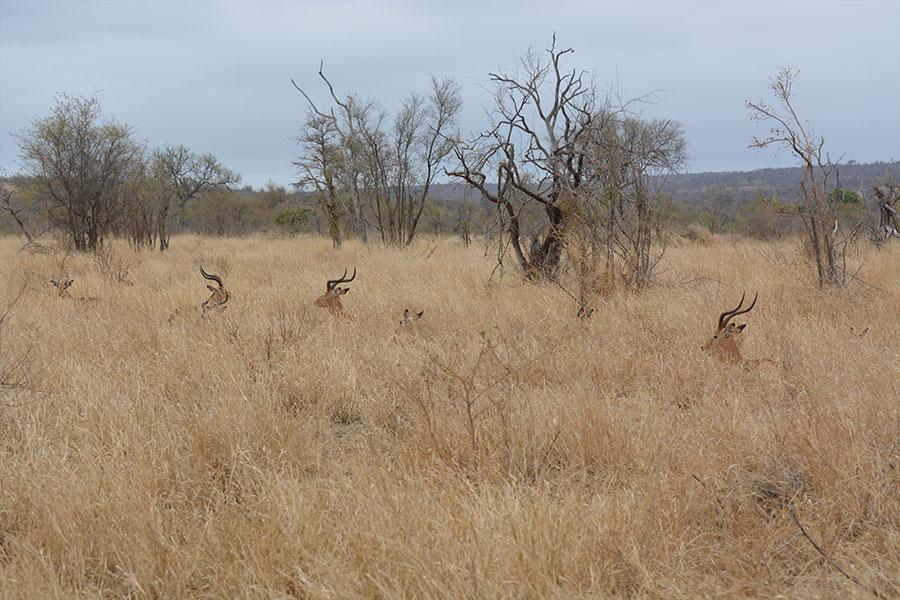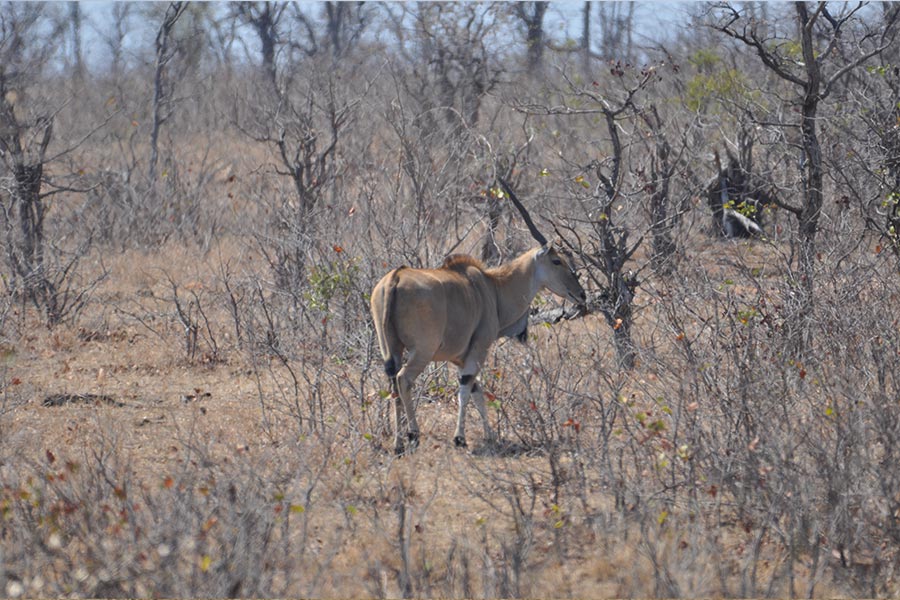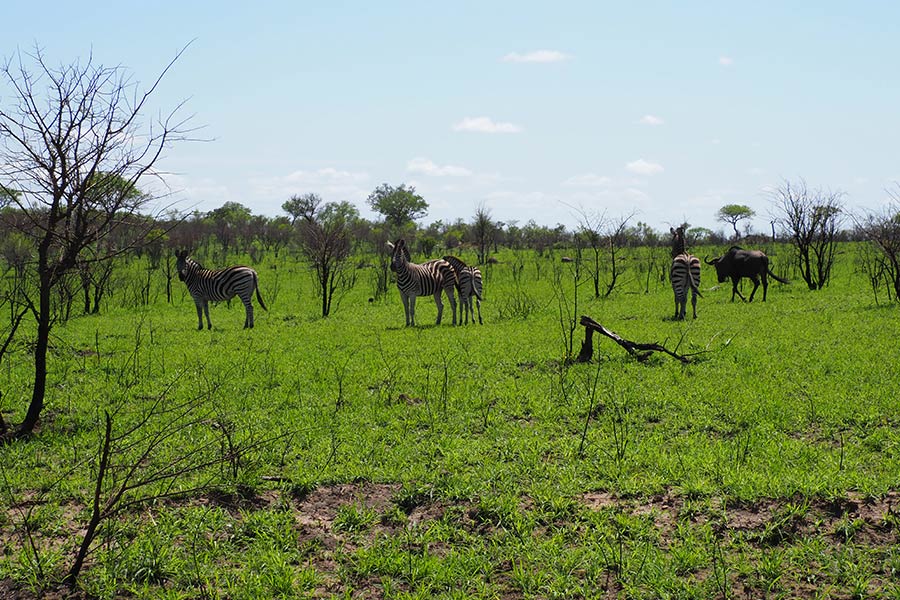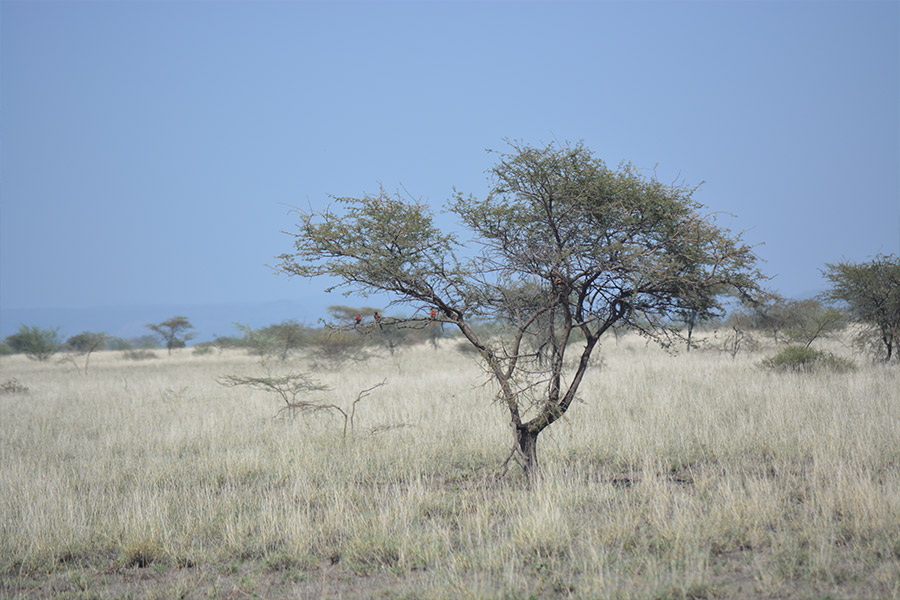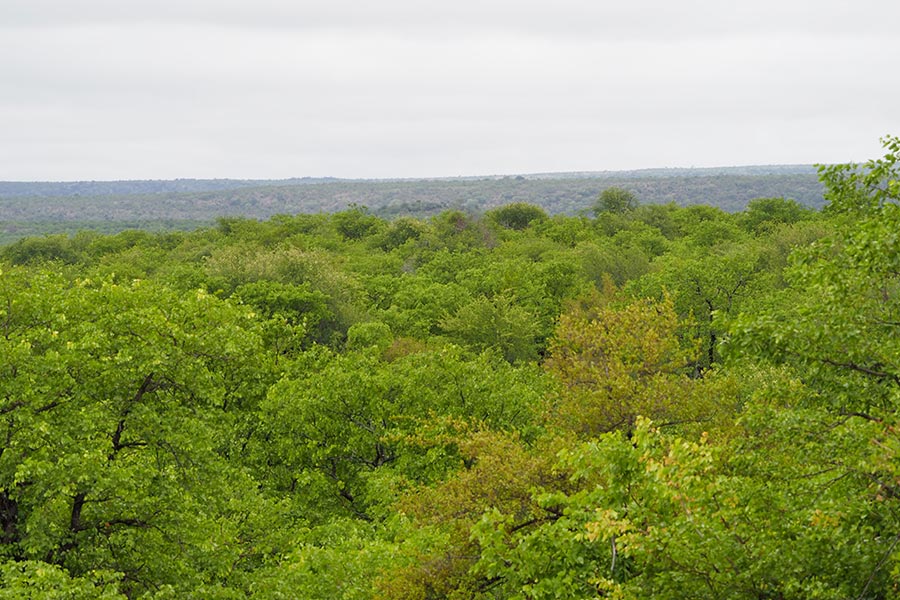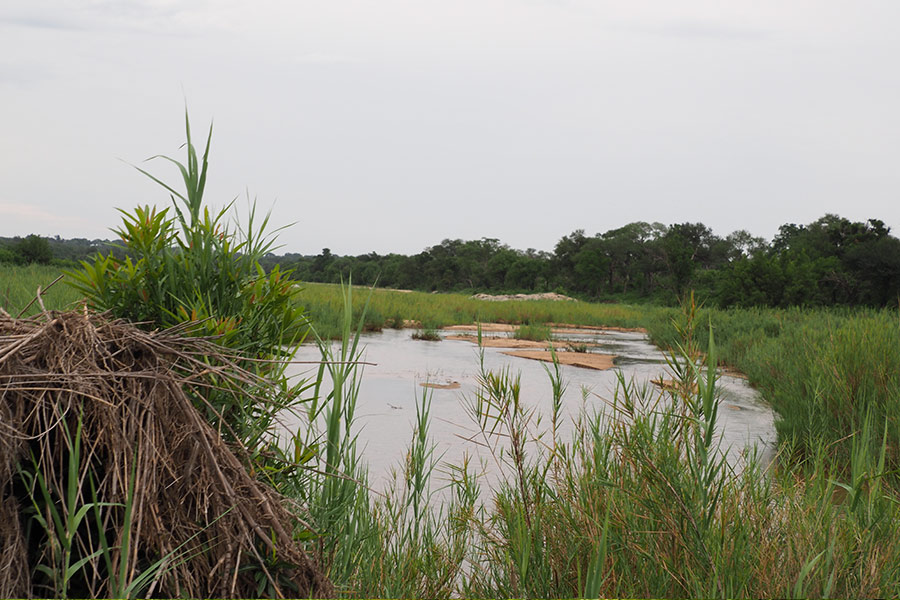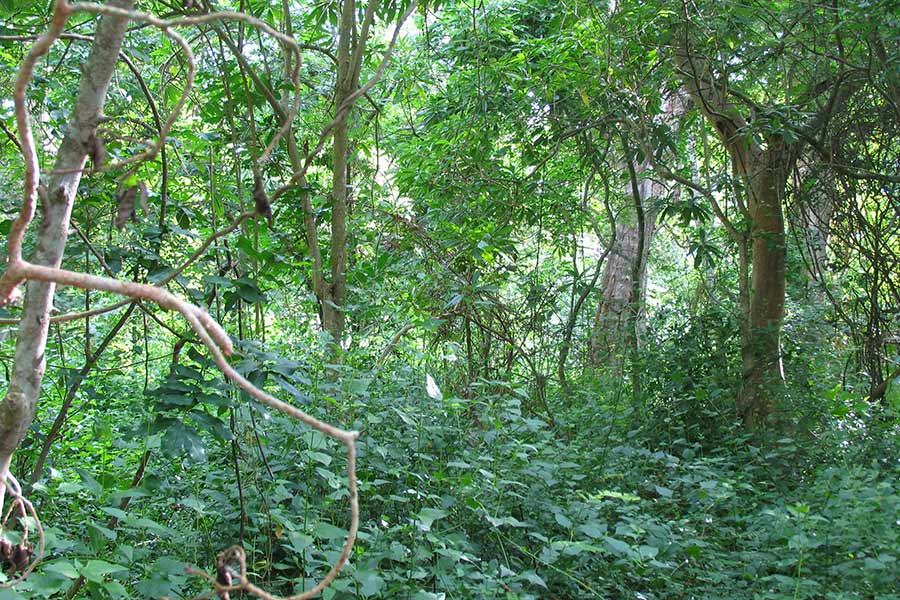- Paleoecologists study environments in the distant past and the environments of our ancient ancestors to better understand the context of our evolution
- They use our understanding of how modern animals lived and the environmental conditions in which they lived to better model the environmental conditions of fossil animals and how they lived
Highlights
What is a paleoenvironment?
Paleoenvironment means ancient environment, so paleoecologists study environments in the distant past. Researchers study the environments of our ancient ancestors to better understand the context of our evolution. They ask questions that help us understand the environmental factors and changes that might have impacted how we evolved.
When we think of environments, we tend to think of the plants and animals that live there like this young male lion in mixed thorn and marula woodlands. Paleoecologists use modern environments of both vegetation and animals to help reconstruct the paleoenvironments.
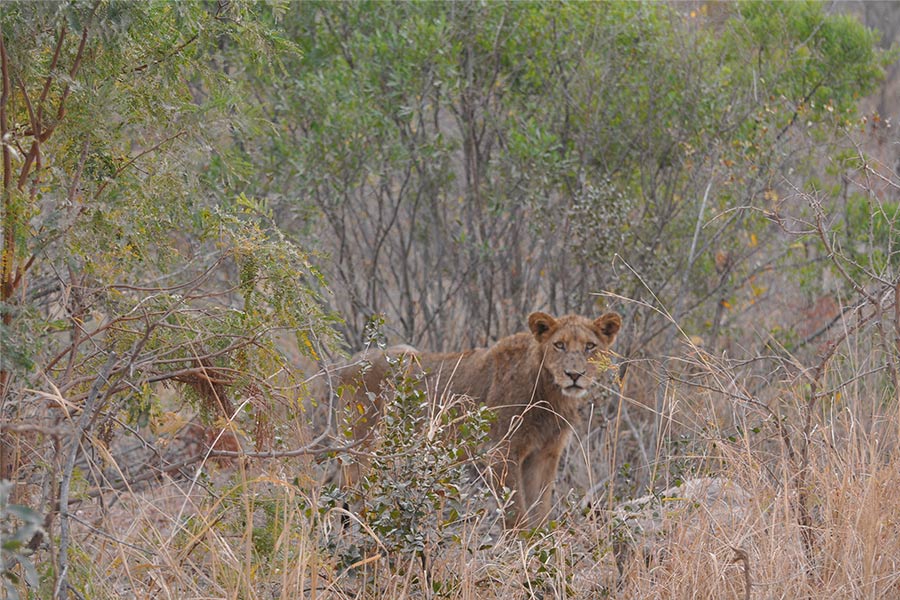
Young male lion in mixed thorn and marula woodlands. Image credit Kaye Reed
There is also another type of environment that paleoanthropologists study—geologists often use the term to describe the way the soil in which fossils are found was deposited, sometimes called depositional environments and includes sands, silts, clays, etc. This is important for understanding how the fossils that we find got into the soils in which they are found. In this picture you can see the different colored layers in the ancient soils that represent river and lake deposits from the Ledi-Geraru Research area in Ethiopia.

Different colored layers in the ancient soils that represent river and lake deposits from the Ledi-Geraru Research area, Ethiopia.
Image credit Kaye Reed
How do we know what paleoenvironments looked like?
Paleoecologists reconstruct the paleoenvironment with both abiotic and biotic factors. Abiotic contributions include climate (temperature, rainfall, seasonality), volcanic activity, and types of soils. Biotic factors cover plants, vegetation structure, and animals. Modern animals and their communities are used as analogs to look at the past. We use our understanding of how modern animals lived and the environmental conditions in which they lived to better model the environmental conditions of fossil animals and how they lived. For example, animal communities that live in the forest (like the vervet monkey in the image on the left) will have many more species of animals that are arboreal (adapted for living in trees) and frugivorous (adapted for eating fruits) than those that live in grassland (like the Cape Buffalo in the image on the right).

Animal communities that live in the forest (like the vervet monkey in the image on the left) will have many more species of animals that are arboreal (adapted for living in trees) and frugivorous (adapted for eating fruits) than those that live in grassland (like the Cape Buffalo in the image on the right).
Image credit Kaye Reed
We can look at the locomotor and dietary adaptations of the animals found at a fossil site to determine how many of them were arboreal versus terrestrial (adapted for living on the ground) and frugivorous versus grazers (adapted for eating grass) and compare them to animal communities from modern sites to better understand their community structure and what it tells us about the environment.
Seasonality in Africa is defined by wet and dry seasons—not by winter snow and fall leave colors like the northern hemisphere. The image of buffalos below shows the environmental contrast in the dry season.
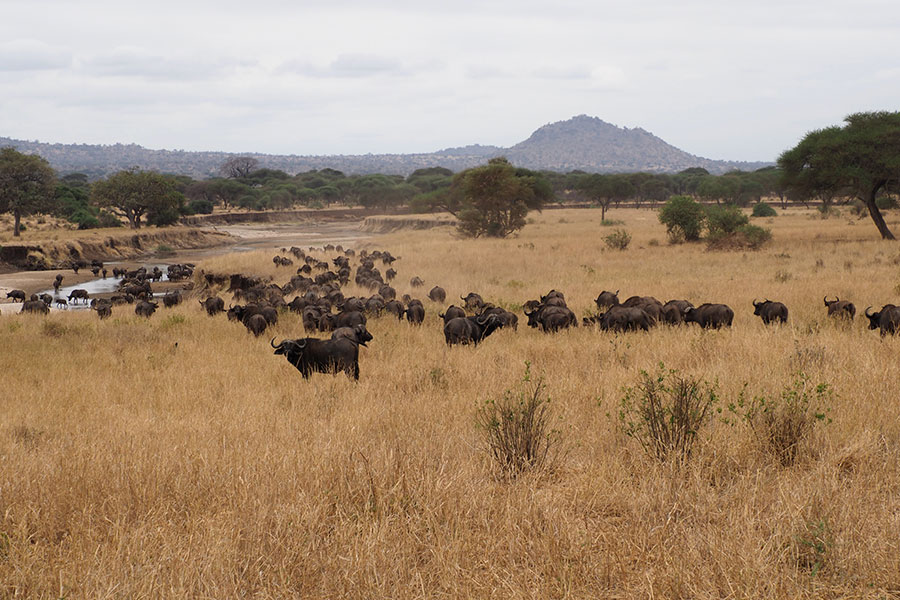
This image of buffalos shows the environmental contrast in the dry season.
Image credit Kaye Reed
What were the paleoenvironments of early hominins?
Studies of the sediments, animals, and plants from early hominin sites show that many early hominin species lived in mosaic habitats, in other words, habitats with different vegetation types. They are often a mix of woodland, bushland, shrubland, grassland, and riverine forest.
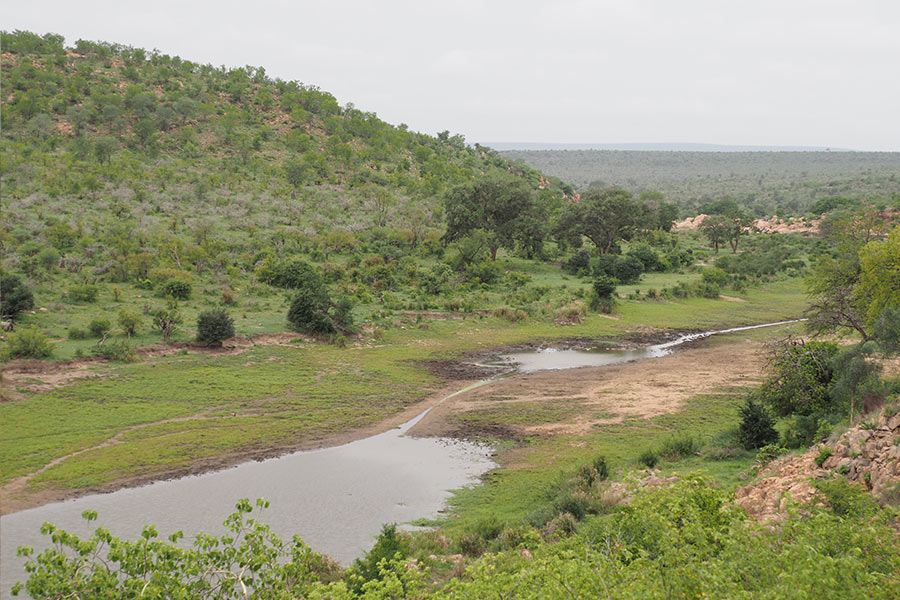
Mosaic habitats—habitats with different vegetation types—are often a mix of woodland, bushland, shrubland, grassland, and riverine forest.
Image credit Kaye Reed
However, over the course of our evolutionary history (spanning about 7.0 million years), the climate got cooler and drier globally, which had an impact on the local environments where hominins lived, resulting in the expansion of grasslands and increase in seasonality (in Africa this means an increase in the length of the dry season when there is no rain). This shift probably happened around the same time as the origin of Homo, the genus to which humans belong. An extremely seasonal and arid environment can be seen in this modern picture of Sommering’s gazelles in the Ledi-Geraru research region.
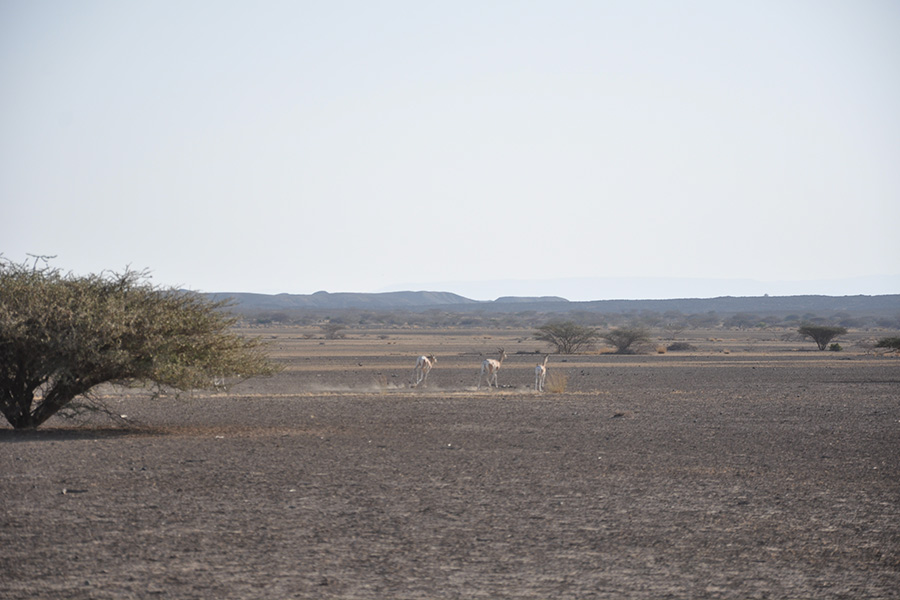
An extremely seasonal and arid environment is seen in this modern picture of Sommering's gazelles in the Ledi-Geraru research region. Image credit Kaye Reed
Researchers study how this changing climate and vegetation structure affected human evolution. Homo species appear in the fossil record after the dry seasons lengthened quite a bit. At the same time that we find evidence of Homo, another hominin genus, Paranthropus, also appears in the fossil record. But while the genus Homo thrived and its members went on to populate every corner of the world (us!), Paranthropus went extinct about 1.0 million years ago. What was the role that the changing environment played in our success and the extinction of our hominin cousins? From early species such as Australopithecus to Homo and Paranthropus, researchers seek to answer this question and are involved in reconstructing habitats, climate, and seasonality to understand their influences on our ancestors.
Paleo/modern animal database
The Modern and Fossil African Communities Paleoecology Lab at Arizona State University’s Institute of Human Origins has compiled databases of 205 modern and 150 fossil localities, the large mammals that inhabit them (297), and climate parameters for modern and proxy data for fossil sites to reconstruct the ancient ecology. The database includes many different mammal communities from different vegetation structures that can be compared with what the fossils tell us. All of the fossil information comes from the fossils that are found at various localities that record the past like Hadar, Woranso-Mille, and Ledi-Geraru, in Ethiopia and Pinnacle Point in South Africa.
Researchers are analyzing Australopithecus afarensis environmental differences through time and across space, as well as Paranthropus species biogeography with these new data.
Written by Kaye Reed PhD and Denise Su PhD
